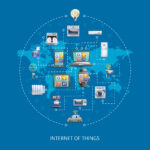The recent events have seen Apple take the position of a the leader in global smartphone shipments to beat the former top leader, Samsung. Following this large-scale shake-up, as IDC’s Worldwide Quarterly Mobile Phone Tracker claims, a monumental change in the global market of mobile phone industry is taking place. Together, we dive into the specifics, decoding the reasons for Apple’s success, the effect on each company, and the wider currents that determine the smartphone market in the world.
Background: A Historic Shift
For more than a decade, Samsung has been leading the smartphone shipments forefront in the whole world market. The other time we saw the pole position held by another company other than Samsung was in 2010, with Nokia leading. The year 2023 has, indeed, come, and this well-established status quo has been disrupted – and what disruption it is! the disruption being in a very masterful way.
Key Figures: Apple’s Triumph
As stated in IDC’s report, Apple’s iPhone pulled 20% of the global market’s weight, selling an exact 234.6 million smartphones in the last year. Samsung ended the year with 226.6 million shipments while the latter number was 202.4 million for the whole year. This accomplishment does not spell a momentary standstill but rather a shift in the industry’s dynamics.
Apple’s Remarkable Growth: Separating The Aspects.
1. Positive Annual Growth
Nabil Popal, who is the research director with the Worldwide Tracker team of IDC, said that Apple was the only one in the top three that is showing a growth on an annual basis. This evolution pattern has reached its peak with Apple as the very first-time holder of the pole position.
2. Premium Device Trend
Team Apple is in the good position due to the high demand of the expensive devices which already comprise of almost 20% of the market. Apple’s edge is in leveraging this demand for creating enhanced designs and with many offers of trade-in and also 0% financing that is not available from the competitors.
3. Resilience Amid Challenges
While it has to deal with regulatory challenges and heightened competition particularly from Huawei, Apple’s largest market being China, the company has shown great resilience. The company’s strategic moves, including concessions for Chinese customers, provide it with a trump card for keeping the leading position.
The Role of Competition: Beyond Apple vs. Samsung
1. Android Space Dynamics
Though Apple’s prominence is part of what caused Samsung to fall, it is important to note that within the Android world, the competition is quite intense. The likes of OnePlus, Honor and Google entering the market with high performance devices that target the lower section of the high-end price range is making it even more competitive.
2. Emerging Trends
The smartphone market is not staying the same it’s constantly changing and trends are emerging. With the increasing popularity of foldable smartphones and AI functionality on smartphones the consumer expectations and standards are changing. There to are the trends that lead the same diversification of goods on offer and thus the increasing competitiveness in the market.
Global Smartphone Market Trends: Ten Years and a Week
1. Overall Market Decline
The IDC report estimates a 3.2% drop in year-over-year shipments of smartphones worldwide which amounted to 1.17 billion units in 2023. Even though the decline is not a flat line, it does not mean that the signs of recovery were not observed, with an 8.5% yoy growth recorded in the fourth quarter.
2. Regional Variations
Analysing regional diversity is necessary to get a deeper appreciation of the market situation. Regions may display varied patterns, in some cases due to such factors as economic conditions, regulatory environments and technology acceptance rates.
Pros and Cons: Analyzing the Implications
Pros of Apple’s Triumph
- Market Leadership: The success of Apple to the first place signals not only the victory for the company but also the new era of market domination.
- Positive Growth: The fact of Apple growing at a rate of 1% per year underlines its adaptability and symmetry with what consumers think they need.
- Premium Device Dominance: It is the brand’s emphasis on premium devices, placing it as a pioneer in a high-end niche of the market.
- Strategic Resilience: The excellence of Apple’s management in overcoming obstacles and in well-conducted operations despite the headwinds caused by regulatory issues proves that the company is resilient on the strategic level.
Cons and Challenges Ahead
- Intense Competition: Winning for Apple, however, does not mean an end of fierce competition as Android rivals are already planning on how best they can innovate again and challenge the status quo.
- Regulatory Scrutiny: The intensified regulatory scrutiny worldwide subjects tech giants such as Apple to challenges which they need to address by being skilful in dealing with legal and compliance issues.
- Market Volatility: The smartphone market’s volatility as an industry mandates its businesses to be dynamic in the face of consumers constantly changing taste, economic situations and geopolitical factors.
FAQs: Addressing Common Queries
Q1: The Driving Force of Apple in Dethroning Samsung
The success of Apple is directly linked to achievements such as positive growth annually, the tendency to produce premium products, and the ability to overcome various crises. Similar to the fact that the organization had the advantage of utilizing the growing demand for top handsets as well as vigorous promotion, this was a crucial factor.
Q2: How was Competition a Legitimized Factor in the Decline of Samsung?
Although Apple is the main reason for Samsung’s losses, the significance of competition within the sphere of Android devices is understated. High-end and mid-range market got revived by the introduction of exciting devices by companies like OnePlus, Honor and Google, thus, turning the battle into a competitive one.
Q3: What is the Implication of This for the Worldwide Smartphone Market?
A shifting balance of power in terms of the current market dynamics can be observed in Apple’s success. The smartphone market is dynamically transforming, with foldable smartphones and AI integration coming to the forefront of the agenda. The industry is now going through a subtle dance of power between market protagonists and nimble competitors.
Conclusion:
In the end, Apple’s dislodging of Samsung from the global smartphone market did not happen overnight, but is merely a proof that the nature of the industry is dynamic. This detailed analysis gains a better understanding of the reciprocal trends regarding Apple and the smartphone market which is formed after the insights into Apple’s success, the competition and wider trends. Companies know that the industry is ever-changing, and they must continuously evolve as trends emerge. Thus, they need to stay agile and provide what consumers ask for worldwide.







https://imacion.co.uk/5-the-best-ai-writing-tools-in-2024/